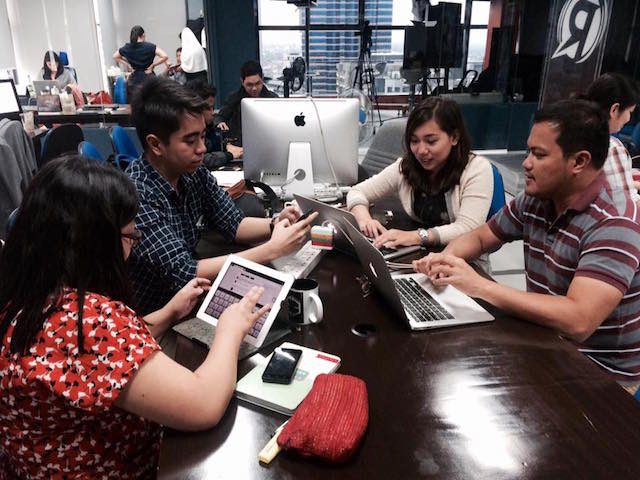SUMMARY
This is AI generated summarization, which may have errors. For context, always refer to the full article.

MANILA, Philippines – It remains a big challenge to remove barriers that hinder persons with disabilities from fully participating in disaster risk reduction (DRR).
This is the common sentiment shared by DRRM advocates in a conversation held in the Project Agos Zero Casualty Facebook group on Friday, June 19.
PWDs usually experience communication barriers during disasters due to lack of sign language interpreters, according to Deaf Association of Misamis Oriental executive director Hazel Bual.
“During [disasters, we] have difficulties ‘cause we can’t hear and express what we want to tell because it’s hard [to communicate] with the rescuer or [with the people in the] evacuation area,” Bual said. (READ: Can PH become a ‘deaf-inclusive’ country?)
Information materials and proper equipment catering to the needs of persons with disabilities are also lacking.
During Super Typhoon Yolanda (Haiyan), Galla said she met a PWD who had to crawl out of his house while going to the evacuation center, bruising his body along the way.
“We have to highlight his capacity to save himself, but if he had access to mobility devices or wheelchairs, it would have been safer to evacuate [him],” she said.

Other barriers
Persons with disabilities are also not able to effectively participate in disaster management processes, according to Handicap International-Philippines DRR advisor Cara Galla (READ: Where are persons with disabilities during disasters?)
“These barriers include policies, attitudes, [and] inaccessible DRR activities,” said Handicap International-Philippines DRR advisor Cara Galla.
Netizens who participated in the discussion suggested several ways on how to make existing DRR efforts more accessible to PWDs:
- Consult with persons with disabilities on how to make current DRR activities more responsive to their needs. They should be part of the whole process – from planning down to the implementation stages.
- DRRM materials, especially those concerning preparedness guidelines, should be specially made for PWDs.
- Teach PWDs the necessary survival skills they can use during disasters
- Local government units (LGUs) can create databases providing the demographics of PWDs in each area, making it easier to craft evacuation plans for them. These would help LGUs identify if evacuation centers are near the houses of PWDs.
- Check the existing community-based DRRM training modules if they are responsive to the needs of PWDs.
- Conduct risk assessments and hazard mapping in every community.
“There are barangays that have or [are] about to conduct risk assessments and hazard mapping,” added Kevin Santos, Handicap International-Philippines communication officer.
“They aren’t a majority, hence the need to really promote inclusion, and having that disability lens.” (READ: #ZeroCasualty: Don’t forget PWDs, elderly)
Mindset change
According to Galla, removing the said barriers and improving DRRM programs would require a change in mindset among citizens.
“For example, thinking ‘It’s difficult to include persons with disabilities [because] that will be costly’ is a mindset we can change,” suggested Galla.
She said that this can be done if everyone – PWDs, their relatives, community members, organizations, LGUs, and the national government – will work together to reform the current DRR practices.
Galla added: “This year, [milestones] are happening at both international and national levels. At the international level, the Sendai Framework for DRR 2015-2030, the new framework adopted last March 18, 2015, is an important guiding DRR framework for persons with disabilities since it emphasizes an all-of-society engagement and highlights persons with disabilities as having roles and responsibilities in DRR [initiatives].” – Rappler.com
#ZeroCasualty hour is a series of social media conversations on disaster preparedness and climate change adaptation that MovePH holds with key Project Agos partners and stakeholders.
Project Agos is a collaborative platform that combines top-down government action with bottom-up civic engagement to help communities learn about climate change adaptation and disaster risk reduction. It is a partnership between MovePH and key government, private and civil society groups. It is also supported by the Australian Government.
Previously on #ZeroCasualty:
#BulusanWatch: Aiming for zero casualty
#ZeroCasualty Hour: Is PH ready for El Niño?
How can LGUs attain #ZeroCasualty?
HIGHLIGHTS: Making #ZeroCasualty a reality
Add a comment
How does this make you feel?
There are no comments yet. Add your comment to start the conversation.